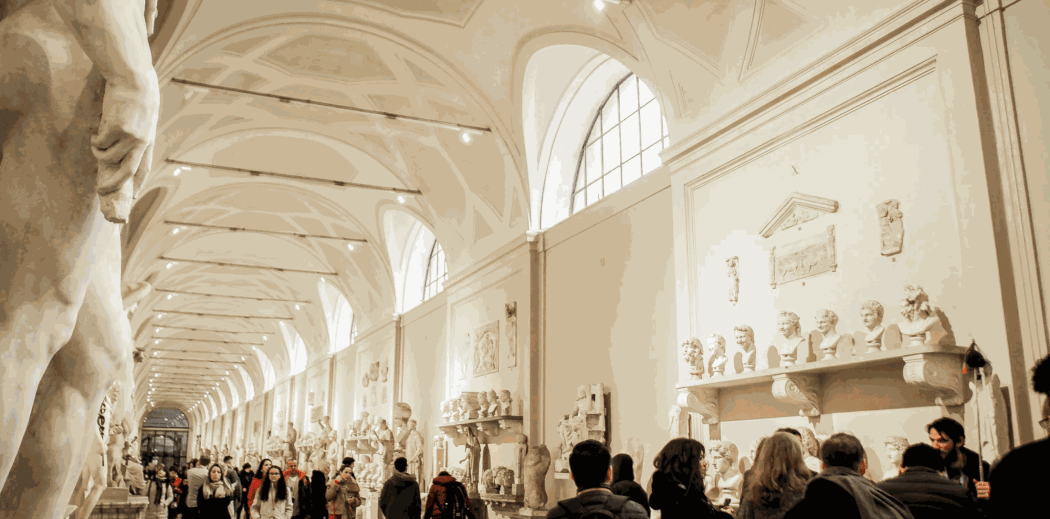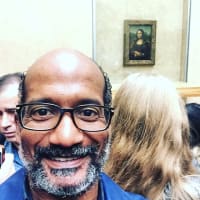
For me, any visit to any city starts with a visit to their museums. There are some museums I don’t particularly like…like maritime museums. Never had any interest in boats or life on the water. Also no interest in museums that feature lots of anthropological exhibits…tools from ancient societies, artifacts from lost civilizations. I’ve also stayed away from natural history and science museums, although it was a thrill to go to them when my children were very young. This is part of the museum experience, too…the experience you have with the other museums goers.
There is nothing quite like walking up the front steps of the Art Institute of Chicago on a perfect sunny late Spring morning, that giant edifice welcoming you into what will be hours of treasure hunting. Or emerging from under your umbrella during a rainstorm to find yourself entering the Met in New York. Rain or Shine, they are places where we can participate in the transformative experience that happens when we are with art. They are also places where we get the flavor of the city we are visiting. I like the particular mix of people that museums bring together, reflecting their own qualities as well as those of the cities where they roost.
As I think about visiting museums again and observing their denizens, I think about how I look at art.
Malcolm Gladwell is someone who I am familiar with through many references in popular culture, but I had never read any of his books until recently. I first read David & Goliath at the suggestion of a friend and it spurred me to read another. Actually I listen to his works as I ride my bike. It’s a nice hour to hour and a half chunk at a time and I am guaranteed not to fall asleep as I often do when reading anything. I’ve never fallen asleep while riding my bike…ever.
In Blink Gladwell talks about “thin-slicing” and the “adaptive unconscious”. It’s always very gratifying when you hear someone speak about something you have thought about, although not pointedly or with great focus, and put a name and even whole school of thought behind it. In these moments, I realize that these thoughts of mine, at least some of them, are shared by others. This notion that perhaps by experience and by means of many other unknowable factors we are able to make meaningful and credible distinctions is also what makes a horse race, and an art dealer or connoisseur successful.
In many cases it can be said these tools are used to make “right” or “wrong” choices. In its relation to art the same can be said when combined with connoisseurship.
The adaptive unconscious is defined as different from conscious processing in a number of ways. It is faster, effortless, more focused on the present, and less flexible.
Intuition comes from tapping into the adaptive unconscious. The adaptive unconscious is that liminal zone between dreams and reality, what might be called a reciprocal of experiences, memories, and dreams.
I have often walked into an exhibition of artworks which I am completely unfamiliar with. Either I don’t know the work at all…or it’s in a new space for me, a museum or kunsthalle I have never visited before. It is exciting when I have no pre-conditioned notion of where I am positioned either physically, mentally or emotionally. I have no expectations. For me, I always have a moment where there is one work I am immediately drawn to. Not because I consciously like it, but because I am attracted to it like iron to a magnet, a moth to a flame, an art advisor to Miami in early December. This artwork is the place where I need to go first, to begin my journey. Later, I might go back and try and figure out how the exhibition is organized (by theme, chronologically, color, etc.). Sometimes that first piece I am drawn to is the work that ends up having particular significance for me. It is always something I make a note of though. Even if I don’t understand all of my choices, recognizing them is important to me. What we respond to and how does give us knowledge of self.
I see a strong connection between the adaptive unconscious, thin slicing and connoisseurship. When we think of connoisseurship, we think of expertise. But connoisseurship…is something gained from both study and experience, both from prowess, rigor, and the innate. I think experience and our unconscious inform each other and can distinguish the connoisseur from the mere expert.
I started off talking about the re-opening of museums. This is still a few weeks away in Santa Fe, so I will write again when I have gone to a few. There will be new rules on how we engage with the art and the museum itself and the galleries will be no doubt be re-hung. So I will see how that plays with my adaptive unconscious….I’ll let you know.
ORIGINAL COMMENTS:
Elizabeth Joy Dunham, 10. September 2020
Dear Aaron, Your beautiful words speak to my heart and give me joy, which I didn't experience in my youth. "Seeing and joy go together." Aaoron Payne "Happiness is experssed through light, and color are teh sign of its presence." Guiseppe Panza Di Biumo "Art is the expression of the soul."
Pamela, 14. September 2020
What a beautiful weaving of thoughts and ideas. Even as a kid I felt a big "wrong" for not enjoying anthropological exhibits. Thanks for letting me off the hook and seeing it as part of the museum experience and knowledge of self. Gladwell also has a unique way of weaving thoughts and ideas. I find your approach to subjects euqally unique and interesting. Will definitely pass this link on!
